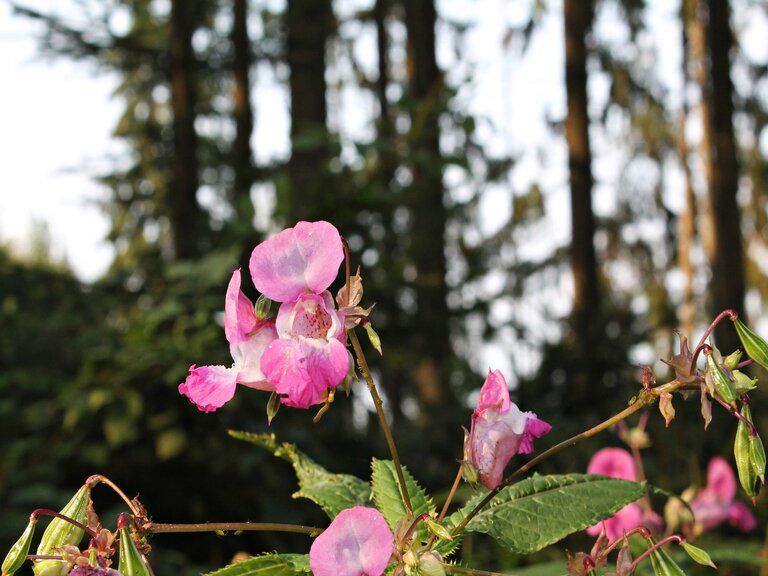
Himalayan balsam is a member of the Balsaminaceae family and can be easily differentiated from its native cousins orange jewelweed (Impatiens capensis) and yellow jewelweed (Impatiens pallida), because Himalayan balsam has showy purple flowers with protruding leaf node glands. Orange and yellow jewelweed have respectively orange and yellow flowers and don’t have leaf node glands as large as Himalayan balsam.
This plant is native to India and was introduced in Canada in 1901 as an ornamental plant. It is now a garden escape which massively colonizes wetlands.
Its invasive properties are due to the fact that it grows in dense colonies, leaving no room for other plants under its shadow. Fruits from this family form capsules which, when ripe, explode and project their seeds away instantly. A plant of Himalayan balsam can produce more than 800 seeds and disperse them at a distance of up to 5 meters away. It also produces large amounts of nectar which also favors its reproduction through pollinators.
This plant can grow up to 3 meters unlike orange and yellow jewelweed which are generally shorter. However, its rooting system is more shallow, which increases erosion susceptibility of colonized soils.
CRE de Laval discovered a colony in the marsh located between highway 19 and south of boulevard des Mille-Îles.
Sources
Sentinelle - Government of Quebec (in French)
Ontario's invading species awareness program



